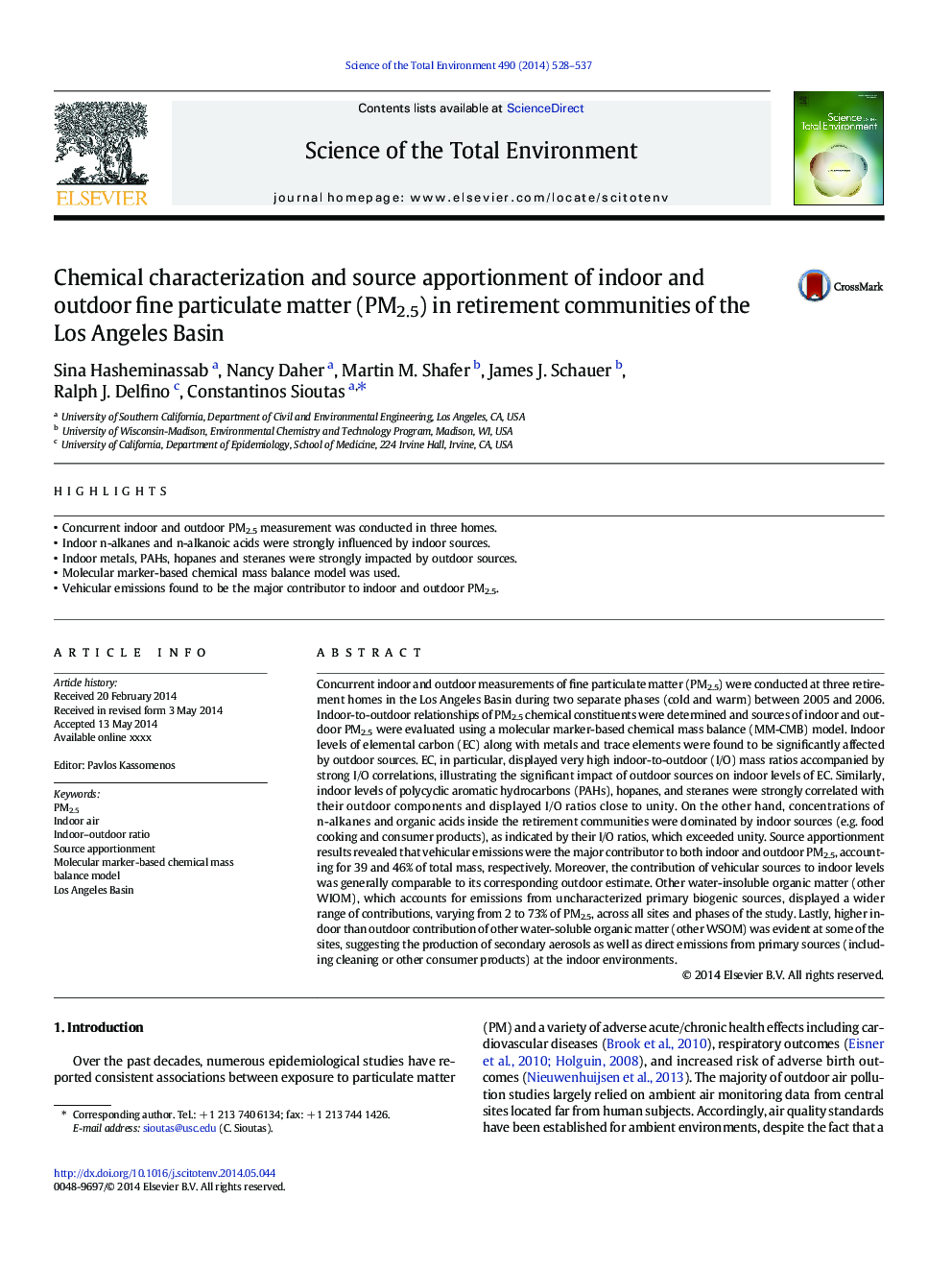| کد مقاله | کد نشریه | سال انتشار | مقاله انگلیسی | نسخه تمام متن |
|---|---|---|---|---|
| 6329150 | 1619780 | 2014 | 10 صفحه PDF | دانلود رایگان |
عنوان انگلیسی مقاله ISI
Chemical characterization and source apportionment of indoor and outdoor fine particulate matter (PM2.5) in retirement communities of the Los Angeles Basin
دانلود مقاله + سفارش ترجمه
دانلود مقاله ISI انگلیسی
رایگان برای ایرانیان
کلمات کلیدی
موضوعات مرتبط
علوم زیستی و بیوفناوری
علوم محیط زیست
شیمی زیست محیطی
پیش نمایش صفحه اول مقاله

چکیده انگلیسی
Concurrent indoor and outdoor measurements of fine particulate matter (PM2.5) were conducted at three retirement homes in the Los Angeles Basin during two separate phases (cold and warm) between 2005 and 2006. Indoor-to-outdoor relationships of PM2.5 chemical constituents were determined and sources of indoor and outdoor PM2.5 were evaluated using a molecular marker-based chemical mass balance (MM-CMB) model. Indoor levels of elemental carbon (EC) along with metals and trace elements were found to be significantly affected by outdoor sources. EC, in particular, displayed very high indoor-to-outdoor (I/O) mass ratios accompanied by strong I/O correlations, illustrating the significant impact of outdoor sources on indoor levels of EC. Similarly, indoor levels of polycyclic aromatic hydrocarbons (PAHs), hopanes, and steranes were strongly correlated with their outdoor components and displayed I/O ratios close to unity. On the other hand, concentrations of n-alkanes and organic acids inside the retirement communities were dominated by indoor sources (e.g. food cooking and consumer products), as indicated by their I/O ratios, which exceeded unity. Source apportionment results revealed that vehicular emissions were the major contributor to both indoor and outdoor PM2.5, accounting for 39 and 46% of total mass, respectively. Moreover, the contribution of vehicular sources to indoor levels was generally comparable to its corresponding outdoor estimate. Other water-insoluble organic matter (other WIOM), which accounts for emissions from uncharacterized primary biogenic sources, displayed a wider range of contributions, varying from 2 to 73% of PM2.5, across all sites and phases of the study. Lastly, higher indoor than outdoor contribution of other water-soluble organic matter (other WSOM) was evident at some of the sites, suggesting the production of secondary aerosols as well as direct emissions from primary sources (including cleaning or other consumer products) at the indoor environments.
ناشر
Database: Elsevier - ScienceDirect (ساینس دایرکت)
Journal: Science of The Total Environment - Volume 490, 15 August 2014, Pages 528-537
Journal: Science of The Total Environment - Volume 490, 15 August 2014, Pages 528-537
نویسندگان
Sina Hasheminassab, Nancy Daher, Martin M. Shafer, James J. Schauer, Ralph J. Delfino, Constantinos Sioutas,